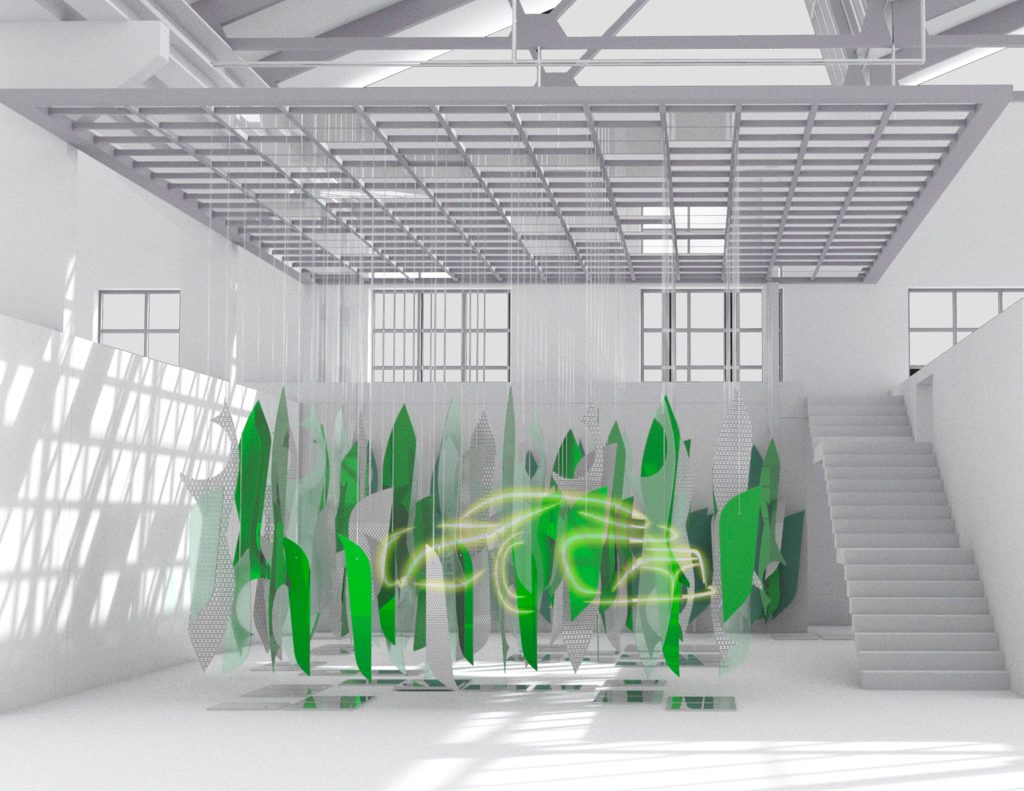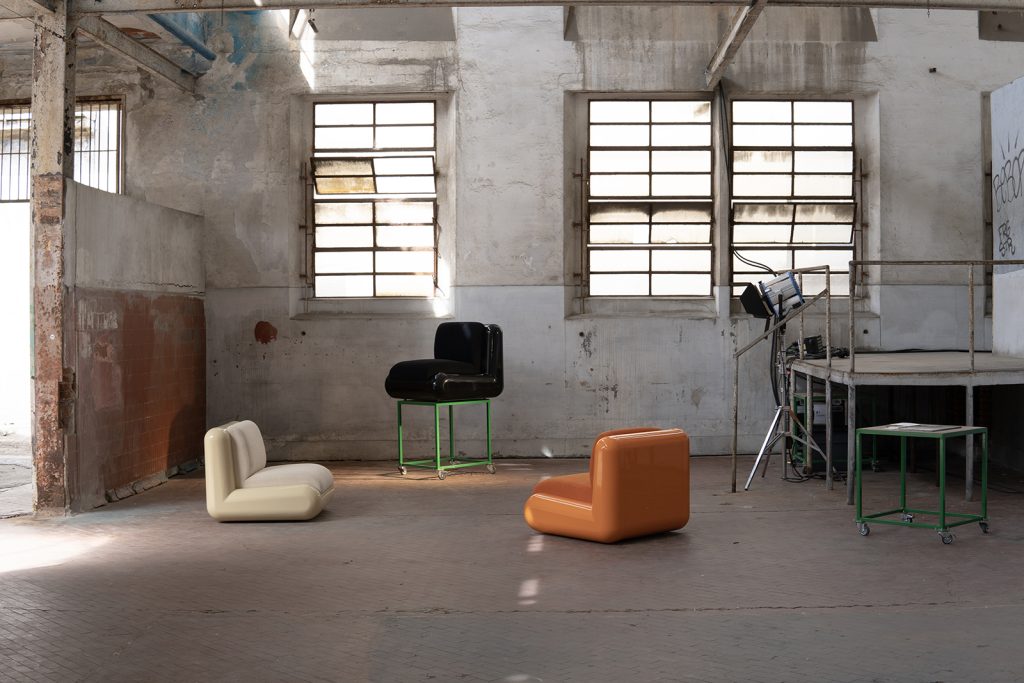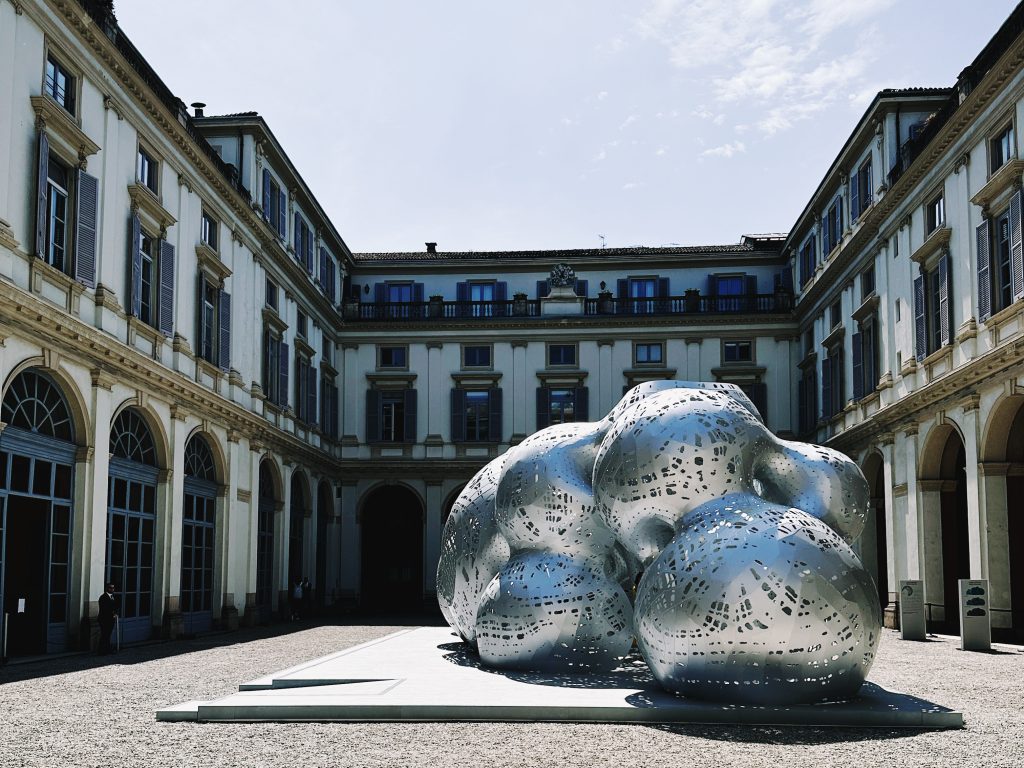Ilse Crawford’s Nature-Inspired Grönska Collection for Kasthall
The English designer’s first collaboration with the Swedish carpet producer

Ilse Crawford‘s work is known all over the world for its assemblage of style and comfort. In her design projects for clubs, shops, interiors and objects, the English designer continuously merges an intimate dimension with an international and recognizable touch. In the spaces (both public and private) that are drawn from her vision, it always feels like home. This is what we found at the Kasthall showroom during Milan Design Week at the launch of the Grnska Collection, the first collaboration between Crawford and the Swedish producer of carpets.
The Swedish word Grnska translates into “greenery” and it’s a simple yet poignant description of the entire collection, which made of four carpetsplus one special limited edition pieceall in green. Every hue and pattern has been derived from the study of the variations of color green in the Swedish nature and how they change according to season and location.

“Kasthall has got fields and farmland surrounding it, and so immediately we were really inspired by that landscape, and all of those rhythms and patterns acquired in it,” Kristen James, senior designer at Studioilse, shares. “And also how the landscape changes over the seasons. We started the collection back in May last year,” she continues. “We visited the factory in Kinna, which is a really inspiring place. Kasthall make all their products in one factory and we were really impressed by that kind of production of rug-making.”

ker, which translates to “field,” is a tufted rug produced in a limited edition of 50 pieces. The horizontal block stripes are obtained by combining different techniques, fibers and colors. James tells us, It encapsulates everything about the collection that we worked with Kasthall on. It’s got lots of different textures and techniques throughout. Weve tried to simulate the idea of landscapes through irregularity. We developed it through the process of testing in the ways theyre tufted and yarn types as well. This one specifically uses a melange yarn which Kasthall previously had in two gray bases; a light and a dark one. We’ve over-dyed them with green tones, so you get this amazing depth of color with the natural shifts of the yarn. Different stripes have got different techniques, so a looped yarn, a cut yarn, and different heights of just a plain yarn.”

Glnta in Swedish means glade and thats the name of the carpet that uses a chenille yarn. “Again, we wanted to create the idea of warmth and something to emulate a landscape. Its got flecks of white underneath obtained using different yarns. A third woven rug, called Fra (which means furrow”), is like the plow lines in a field. Here again, they tried to emulate that idea of depth and irregularity, this time using a boucle yarn, which falls in different ways to reveal the colors beneath.
James also underscores the fact that the process that led to those results was based on constant work within the factory: “Through the whole design process the people at Kasthall were really generous with their knowledge and time. They gave us lots of information so that we could discern what we wanted to explore. They just go down to the workshop, come back with a sample and you can see the results immediately.”

This concept is also dear to Crawford herself. “Whenever we start a project we always look at the reality of the situation because we find that much more interesting than an abstract concept. Theres always something there that will inspire you,” Crawford says to us. “And here, obviously, it was the origin and location of the factory, but also the realization that what Kasthall had was something thats precious today, which is this combination of industry, technology and craftsmanship. Some of the machines go back a very long time, some others are super-modern. The colors are judged by eye, but the ways the rugs are finished is done by hand, so that combination means you get the benefits of both.”

Creative processes are not always linear and Crawford confirms that at Kasthall they wanted to fine tune with the brand before developing the collection. “We keep our brain quite empty until we go and see and understand what it is. And then, of course, its a mess. You have to absorb everything that’s in front of you first, and then the creative process takes you toward a conclusion. Certainly for us it was partly a visual and aesthetic one, but it was largely the actuality of working with those samples in the factory, with the colors, with the yarns, with the tests, and bringing those things together. We were able to work with not just the notion and the dream, but also the idea of the types of landscape, the seasonality of the landscapes, which gave us all a really clear structure to look at color and tactility and textures in a new way.”

It’s curious to think of the carpets as a new form of calendarwith each representative of a season, part of Crawford’s intention. “Completely!” she says, in agreement. “Were looking to the colors underneath the colors, and not in an obvious way. Ages ago I worked with a paint company and it was at the point that they realized that white was actually changing color, that the commonly perceived idea of what a good white was has shifted. I find that so interesting when actually the complex shades that underpin a color that we all think we agree on actually changed. And I think were in one of those changes right now.”
Crawford image courtesy of Kasthall, all other images by Paolo Ferrarini












